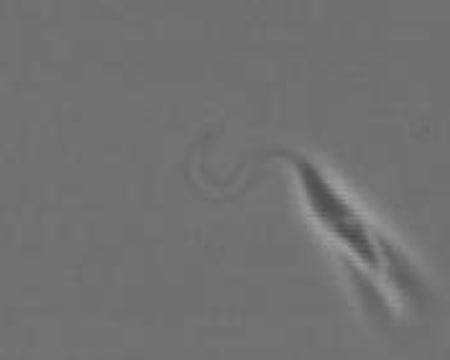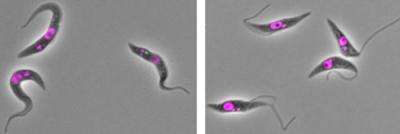When researchers from the University of Oxford reduced the expression of a protein called ClpGM6 in T. brucei trypomastigotes, the cells switched to an epimastigote-like morphology. The kinetoplast was close to the nucleus or anterior to it, and a long section of the flagellum extended beyond the cell. The parasites weren't identical to epimastigotes—they lacked a distinctive surface protein found at this life stage—but they were able to survive and reproduce for more than 40 generations.
ClpGM6 resides in the flagellar attachment zone and likely helps fasten the flagellum to the cell body. Loss of ClpGM6 shortened the flagellar attachment zone, which helps determine cell size and shape. The study suggests that dramatic morphological changes during the life cycle and during parasite evolution may result from adjustments in the levels of a few key proteins, rather than from wholesale changes in the parasite's protein or DNA content.

Researchers show that suppressing expression of a key protein causes major changes in the shape of T. brucei (shown here), the parasite that causes African sleeping sickness.
(Photo Credit: Hayes et al., 2014)

T. brucei parasites in the trypomastigote stage (left) adopt a very different shape compared with the epimastigote-like cells induced by suppression of a key protein (right).
(Photo Credit: Hayes et al., 2014)
Source: Rockefeller University Press